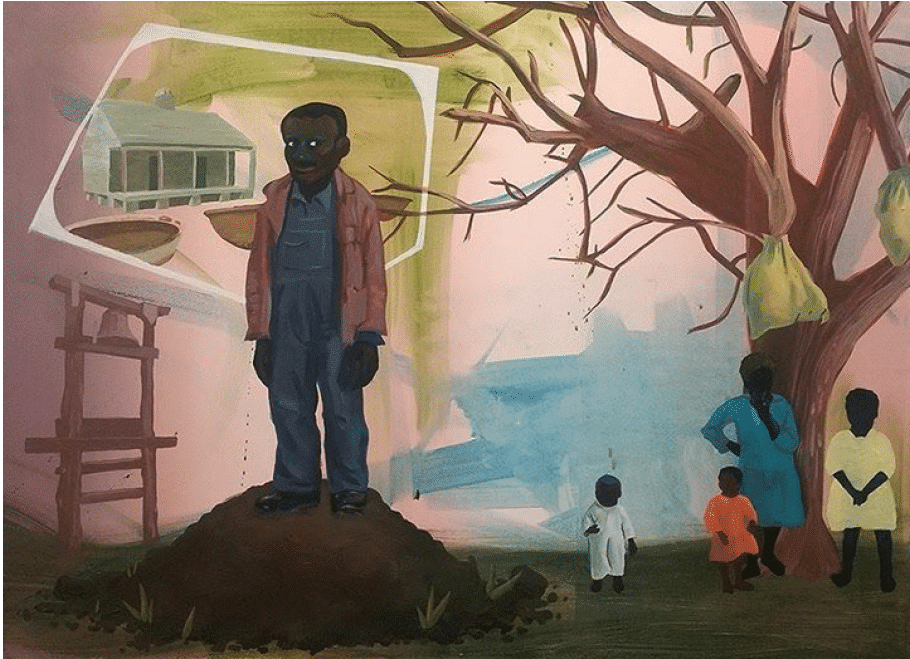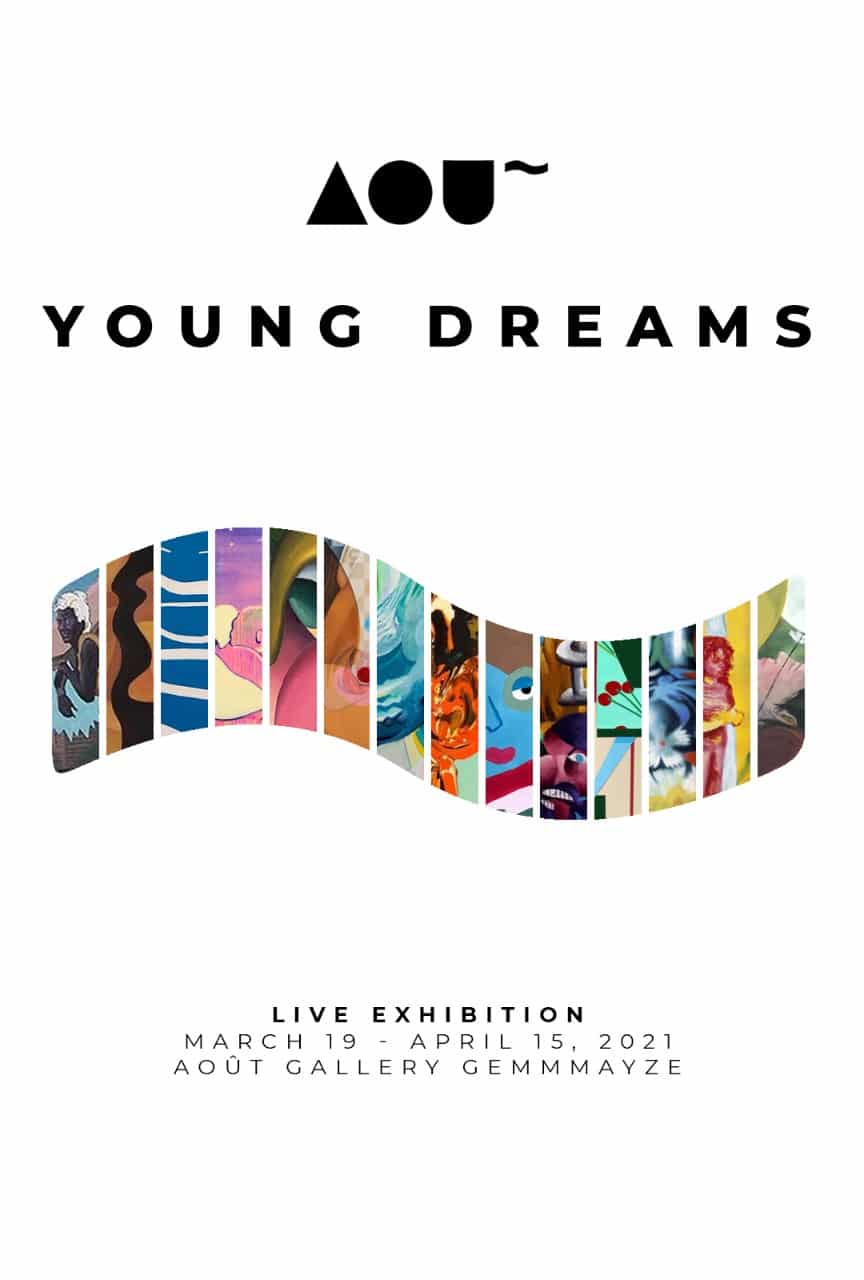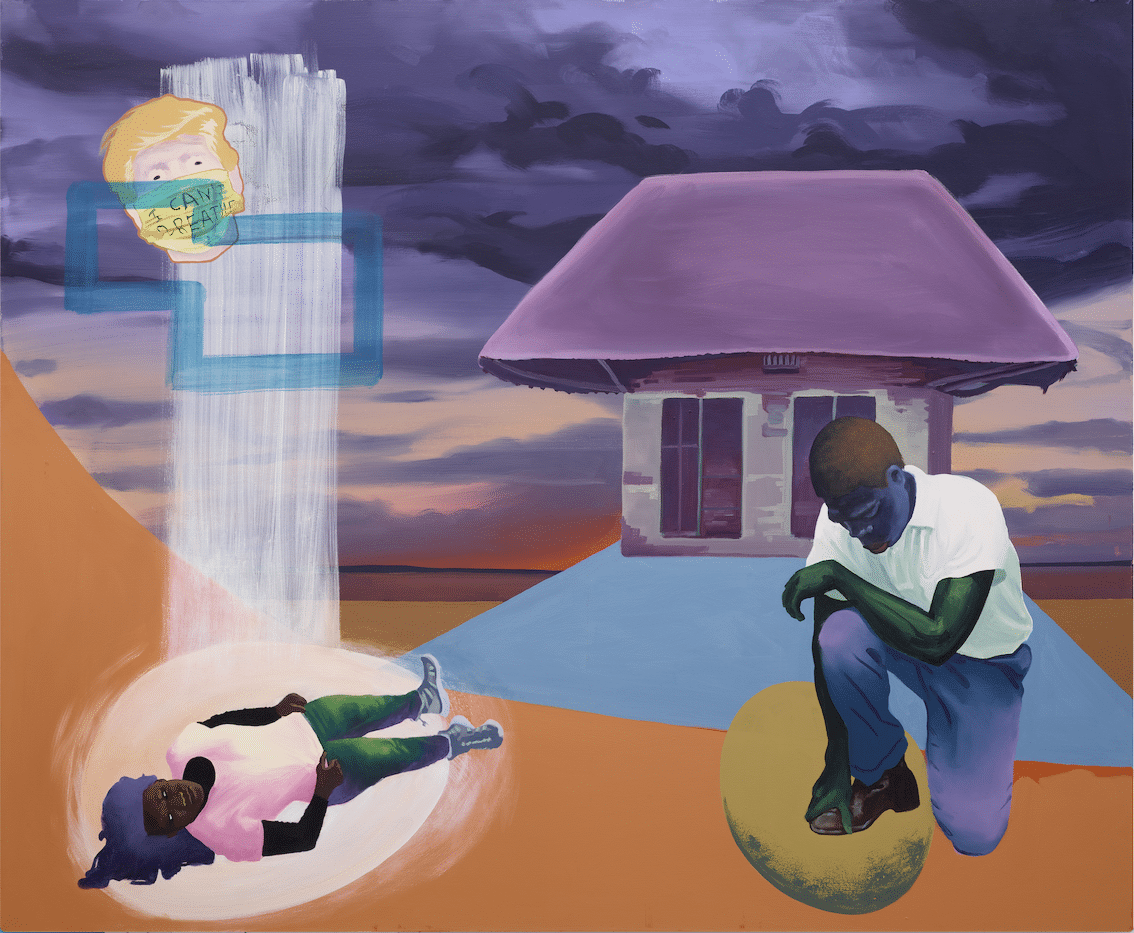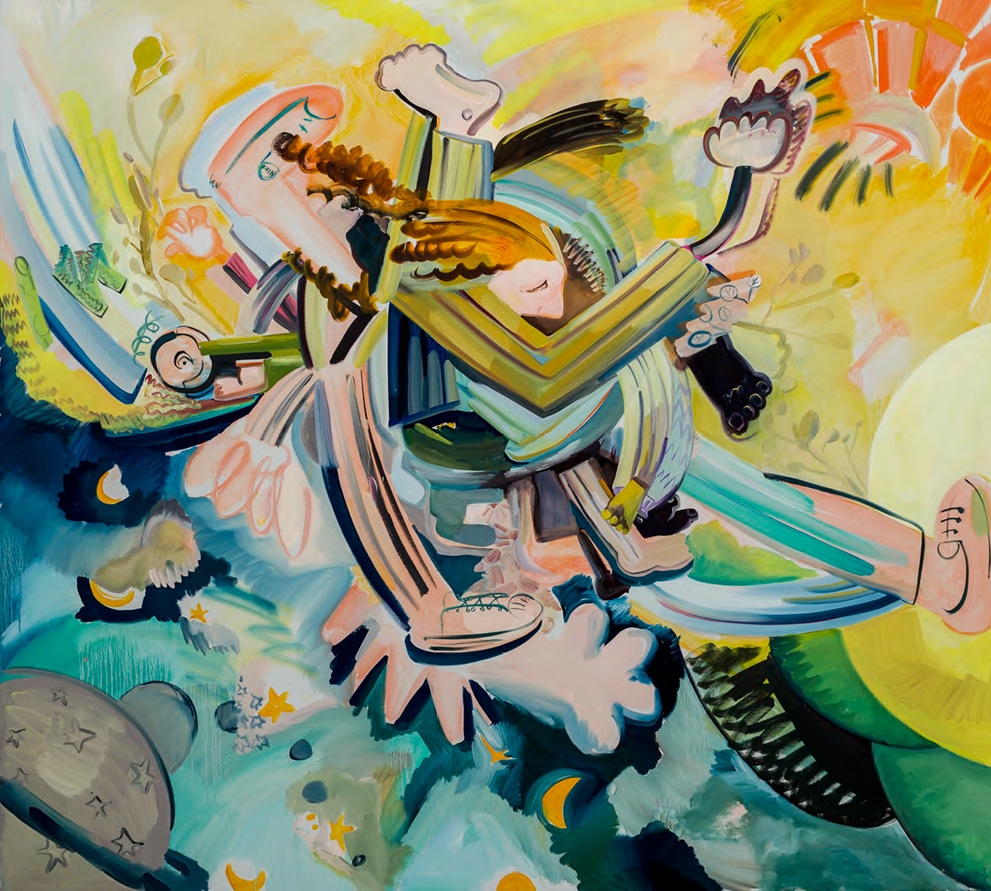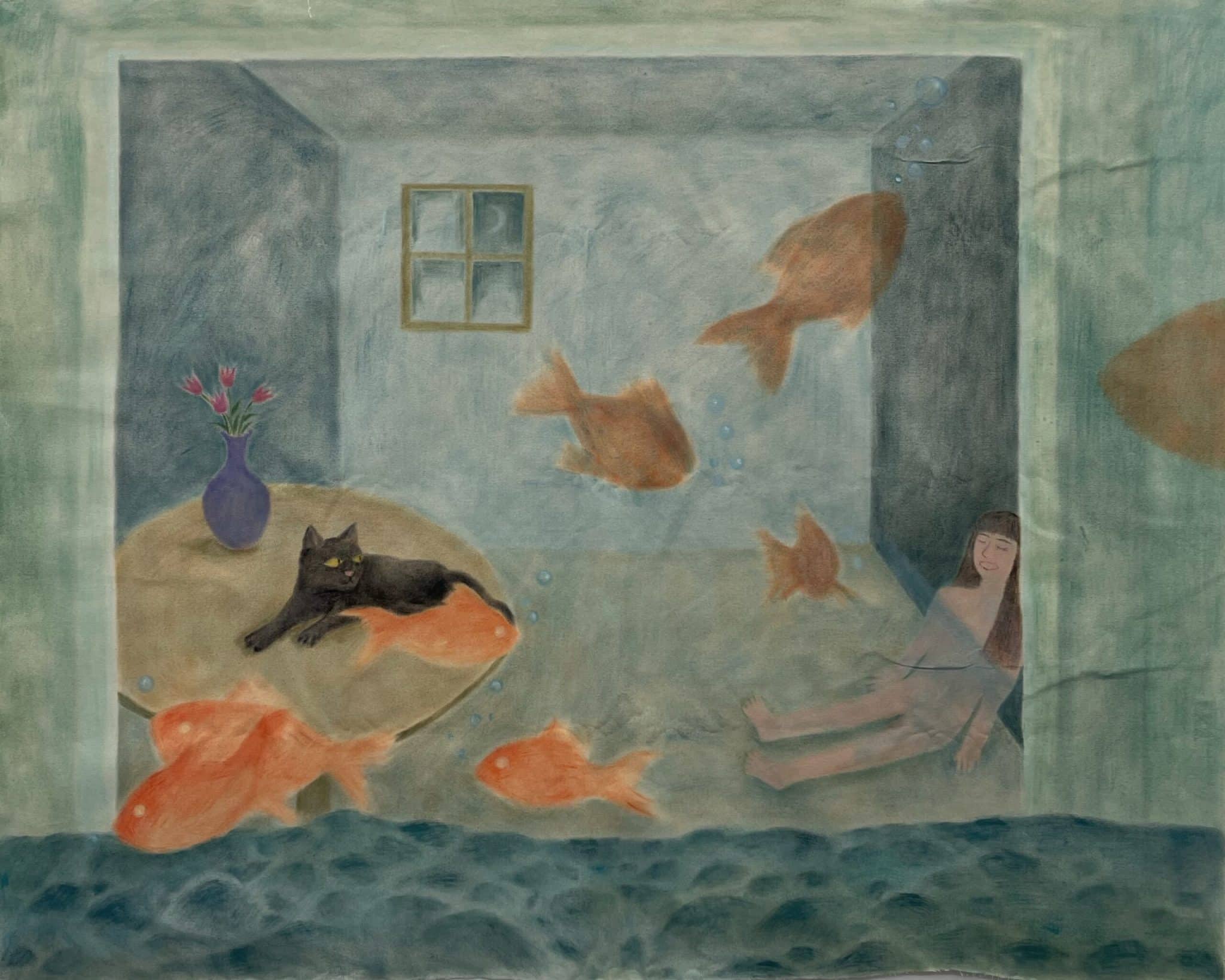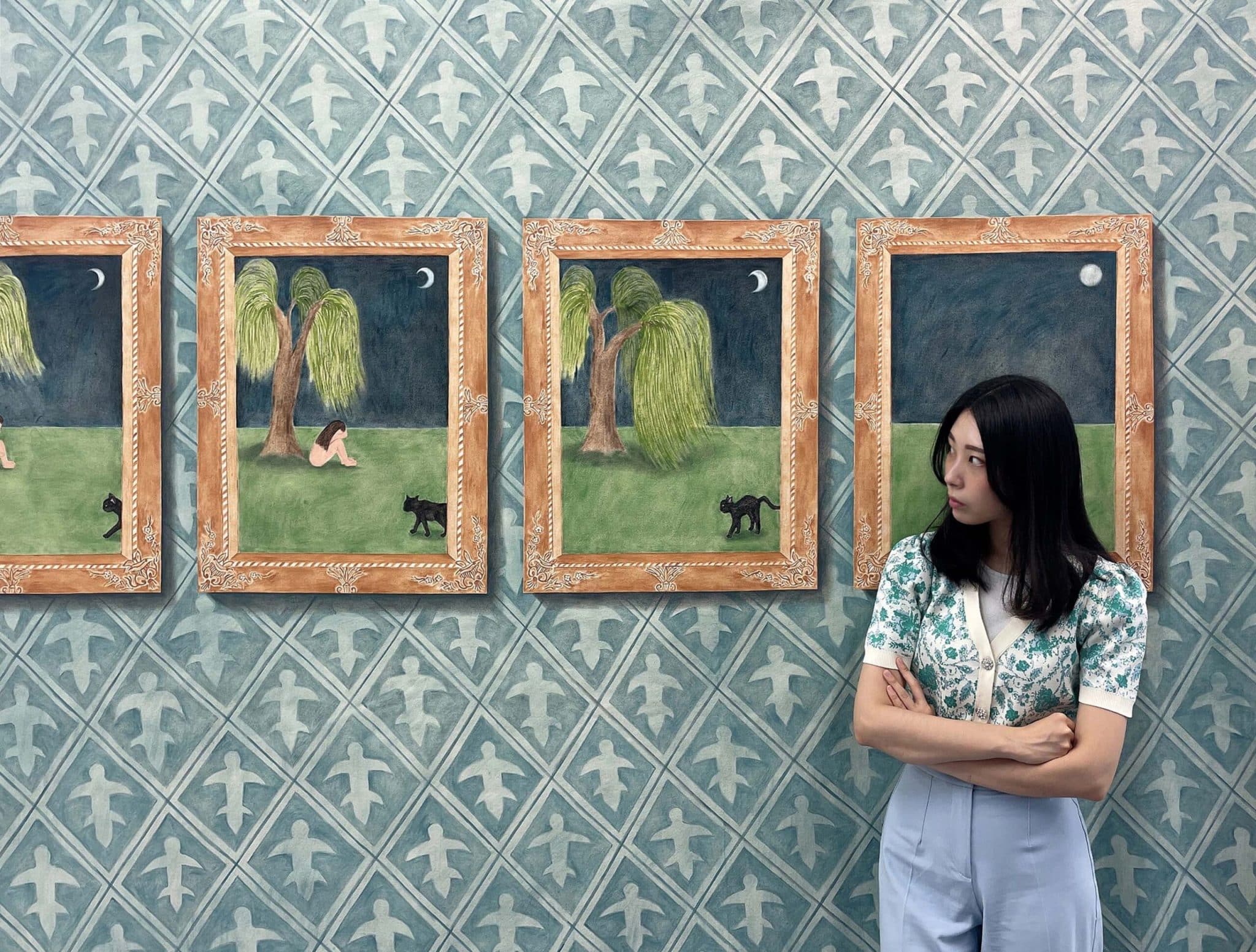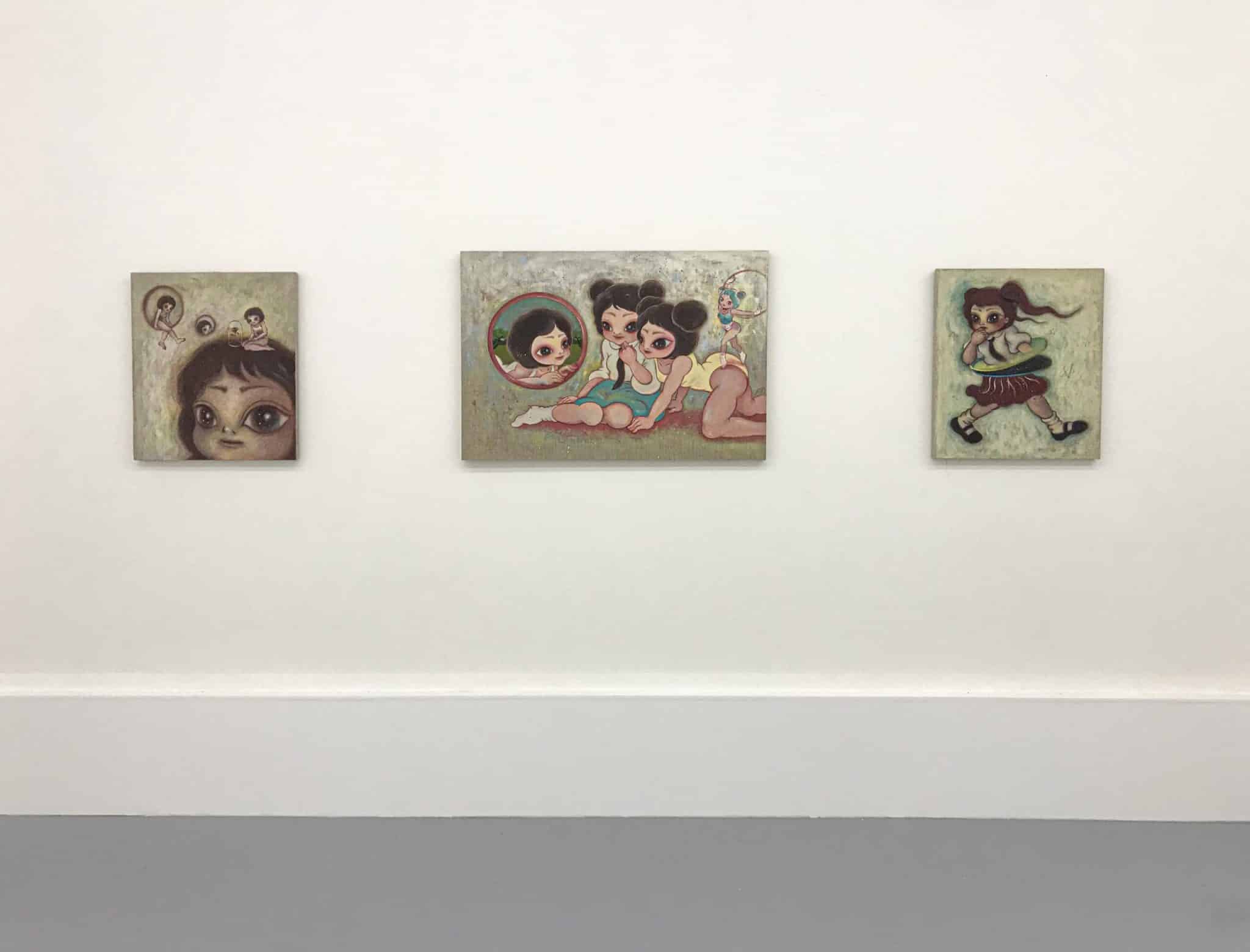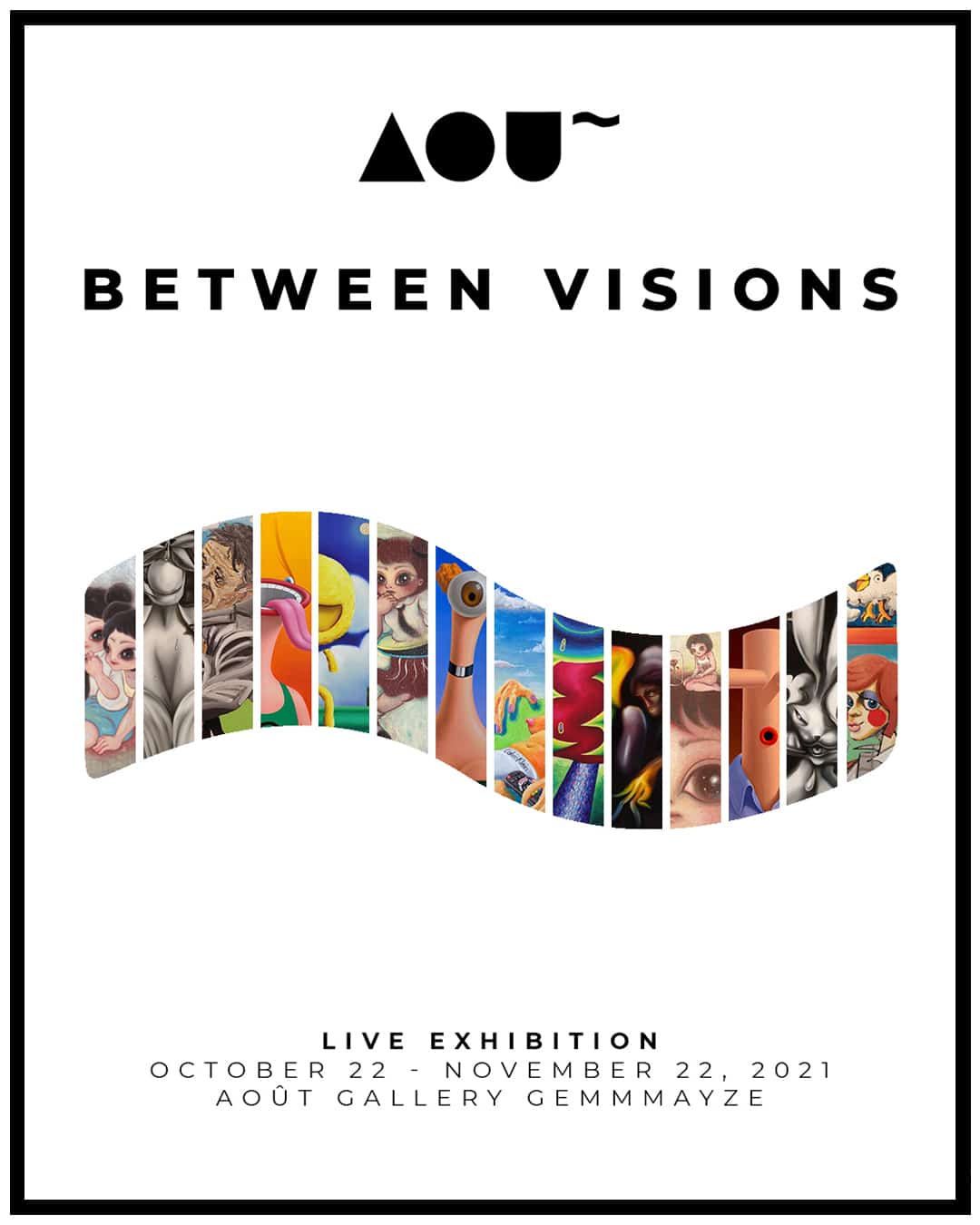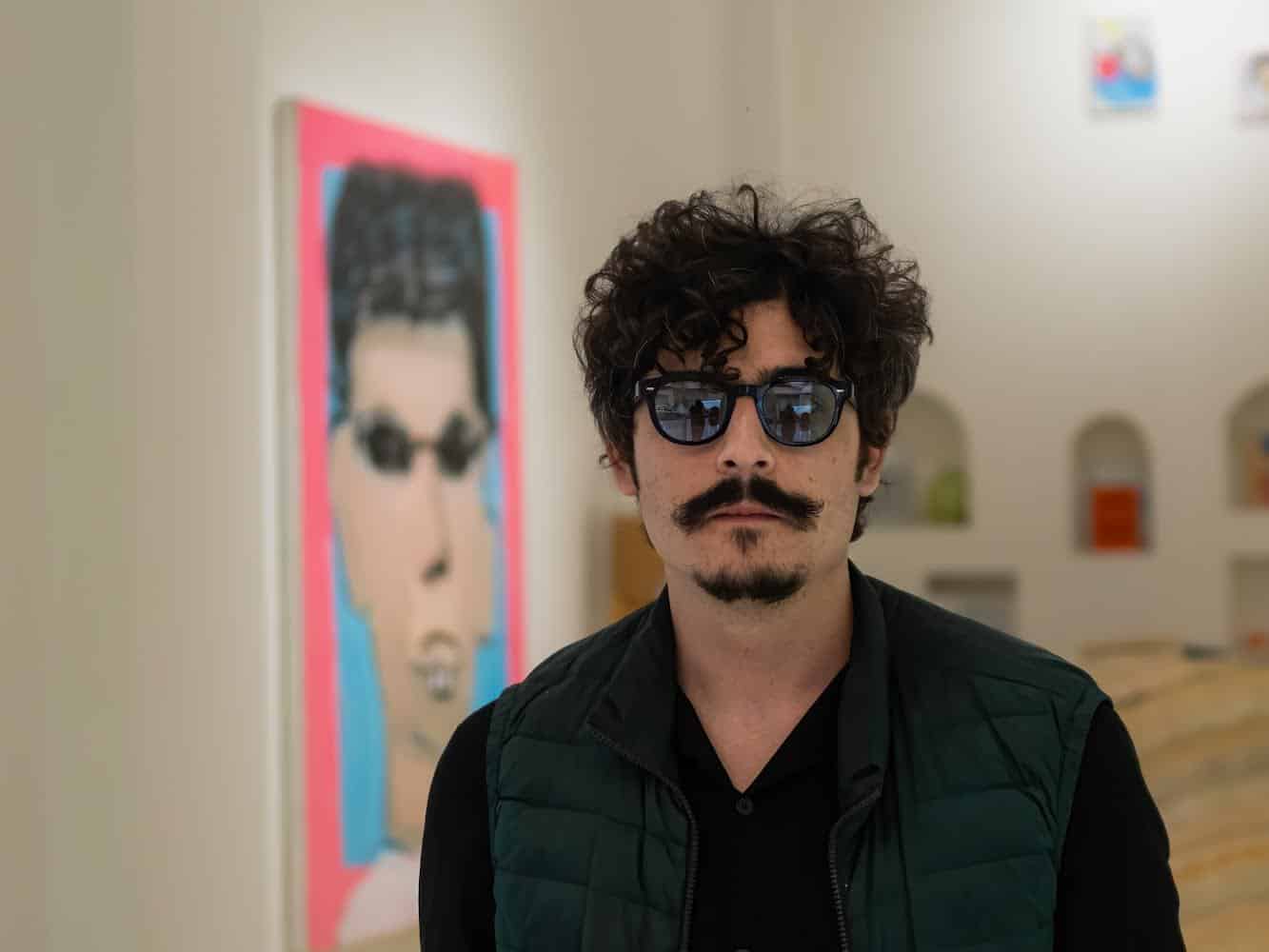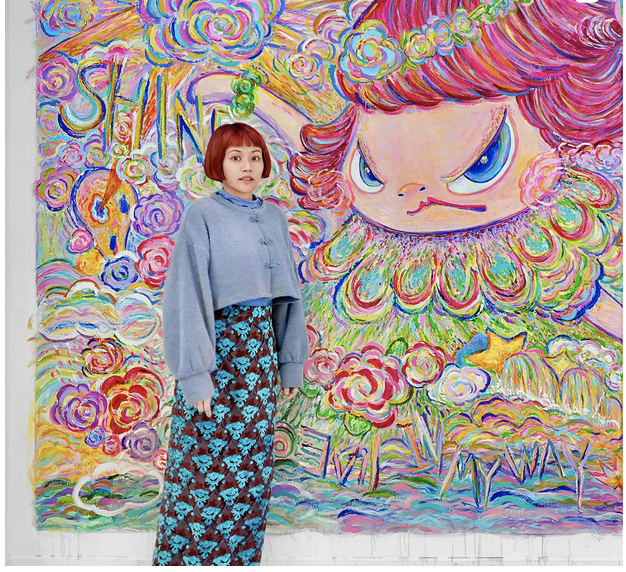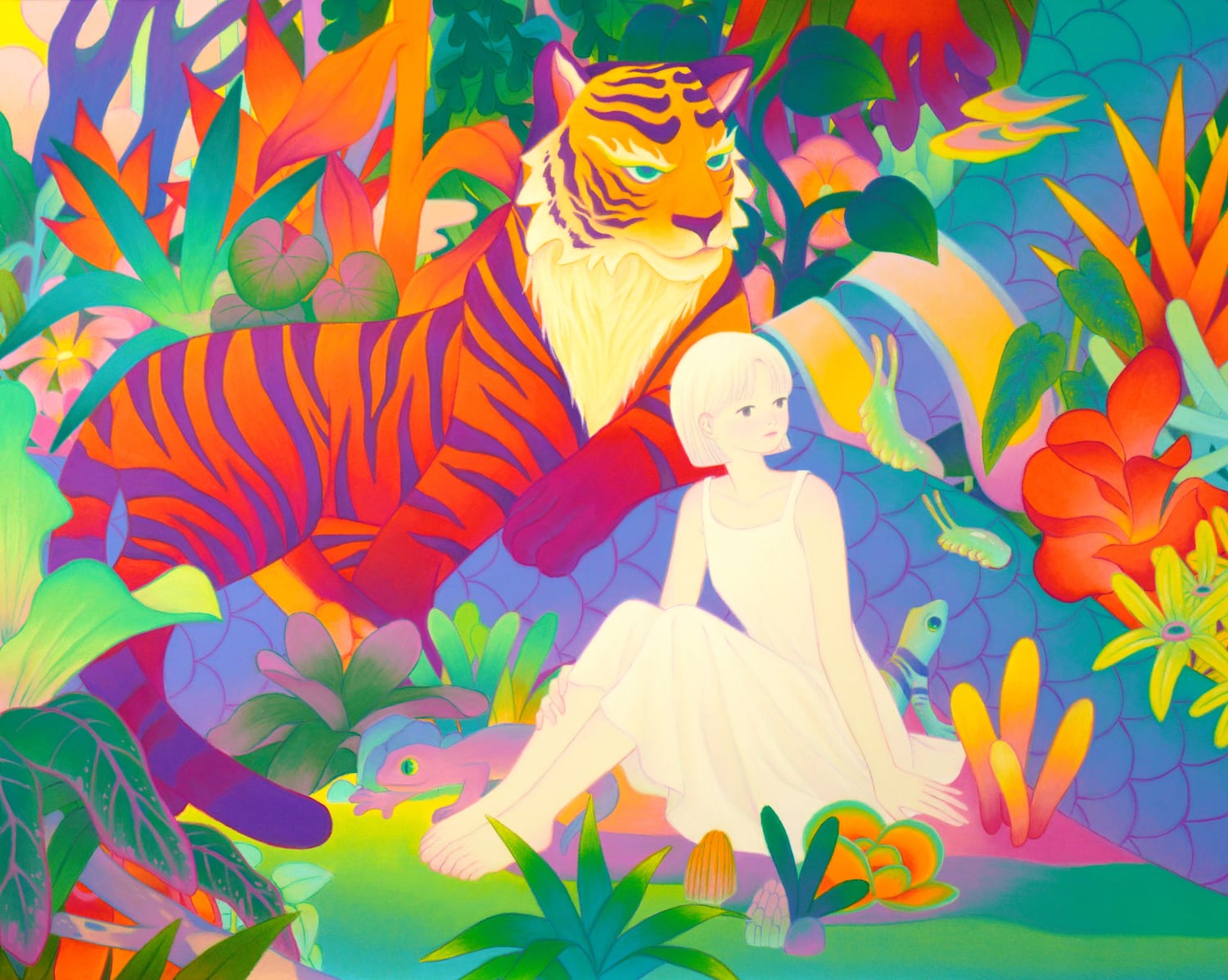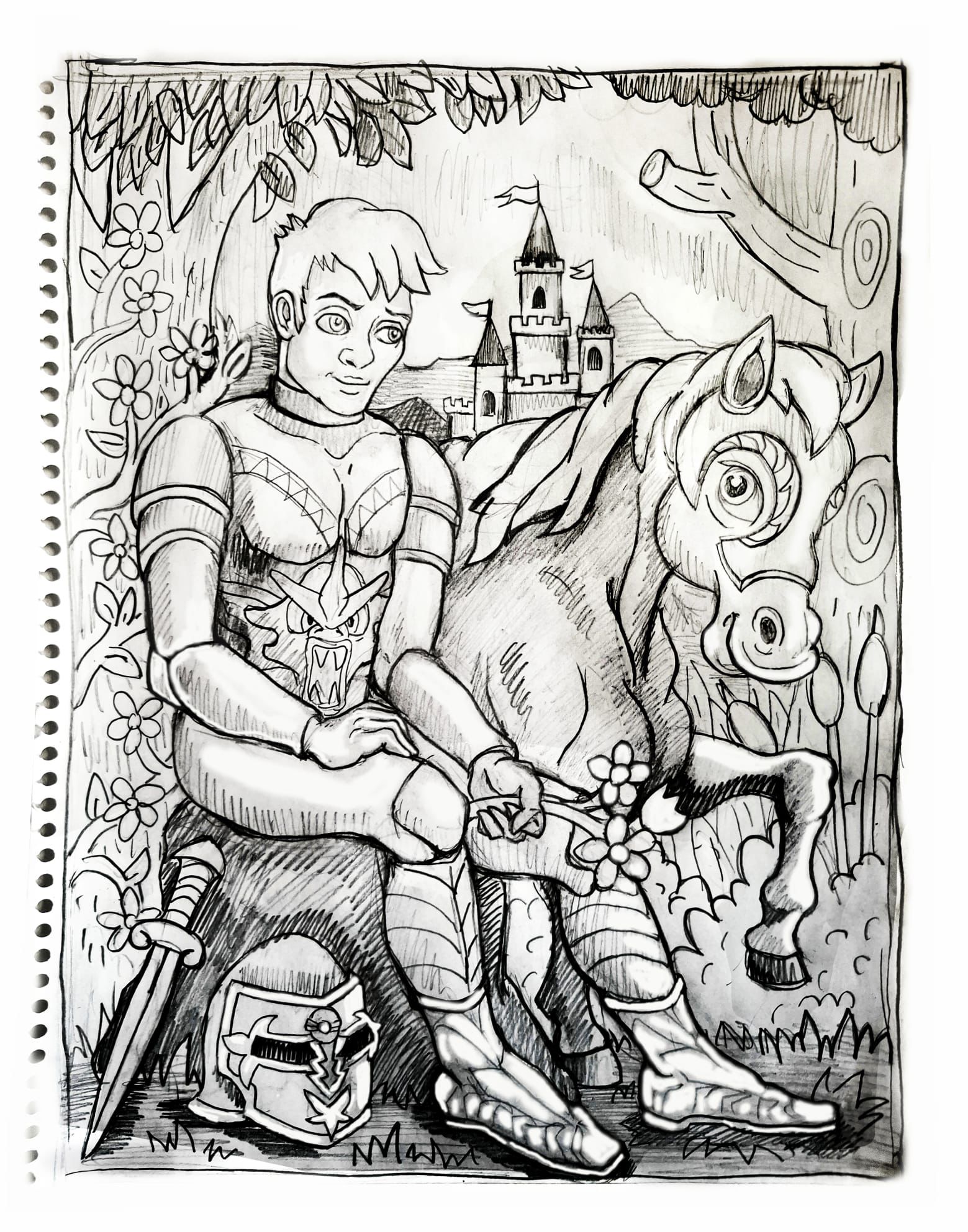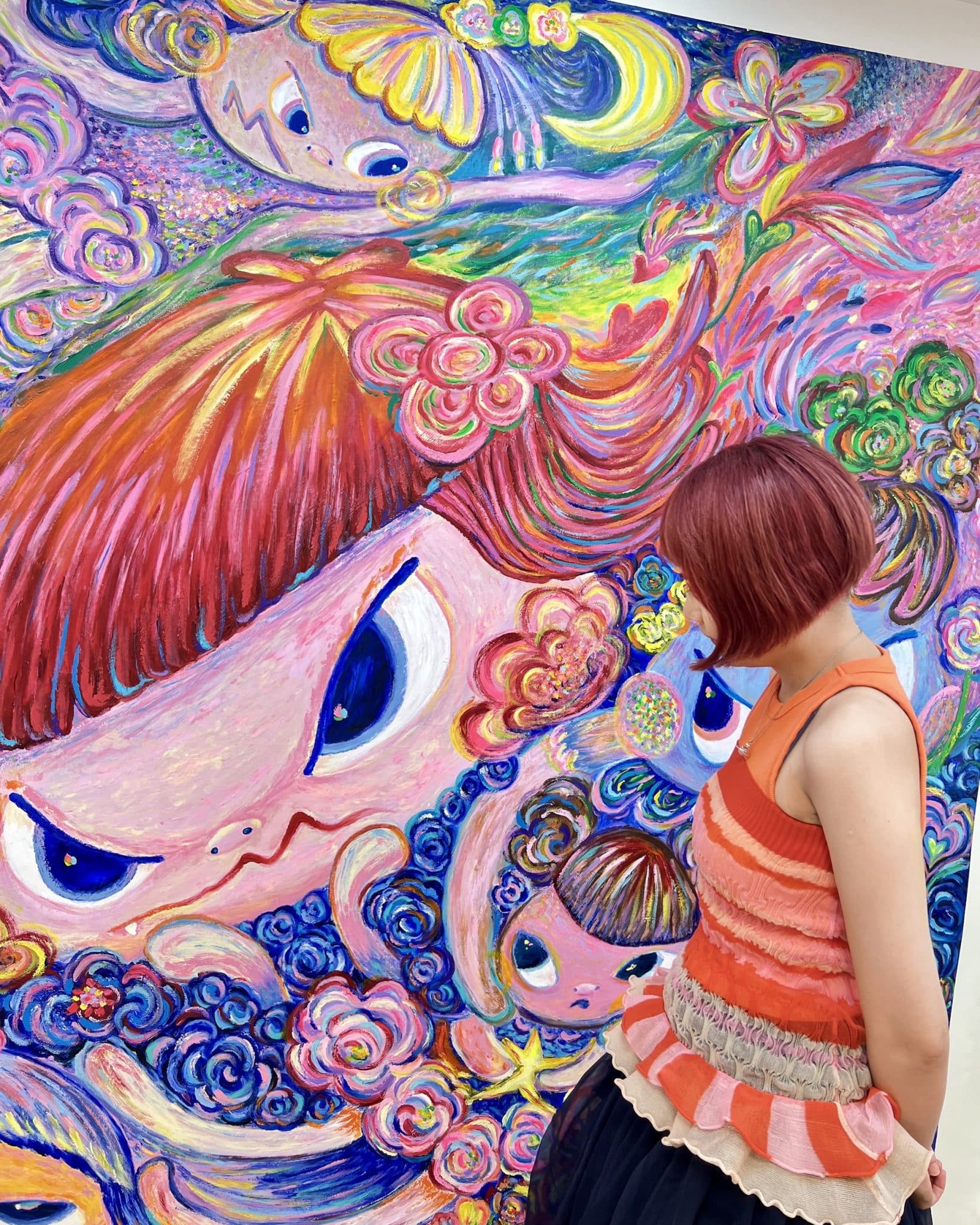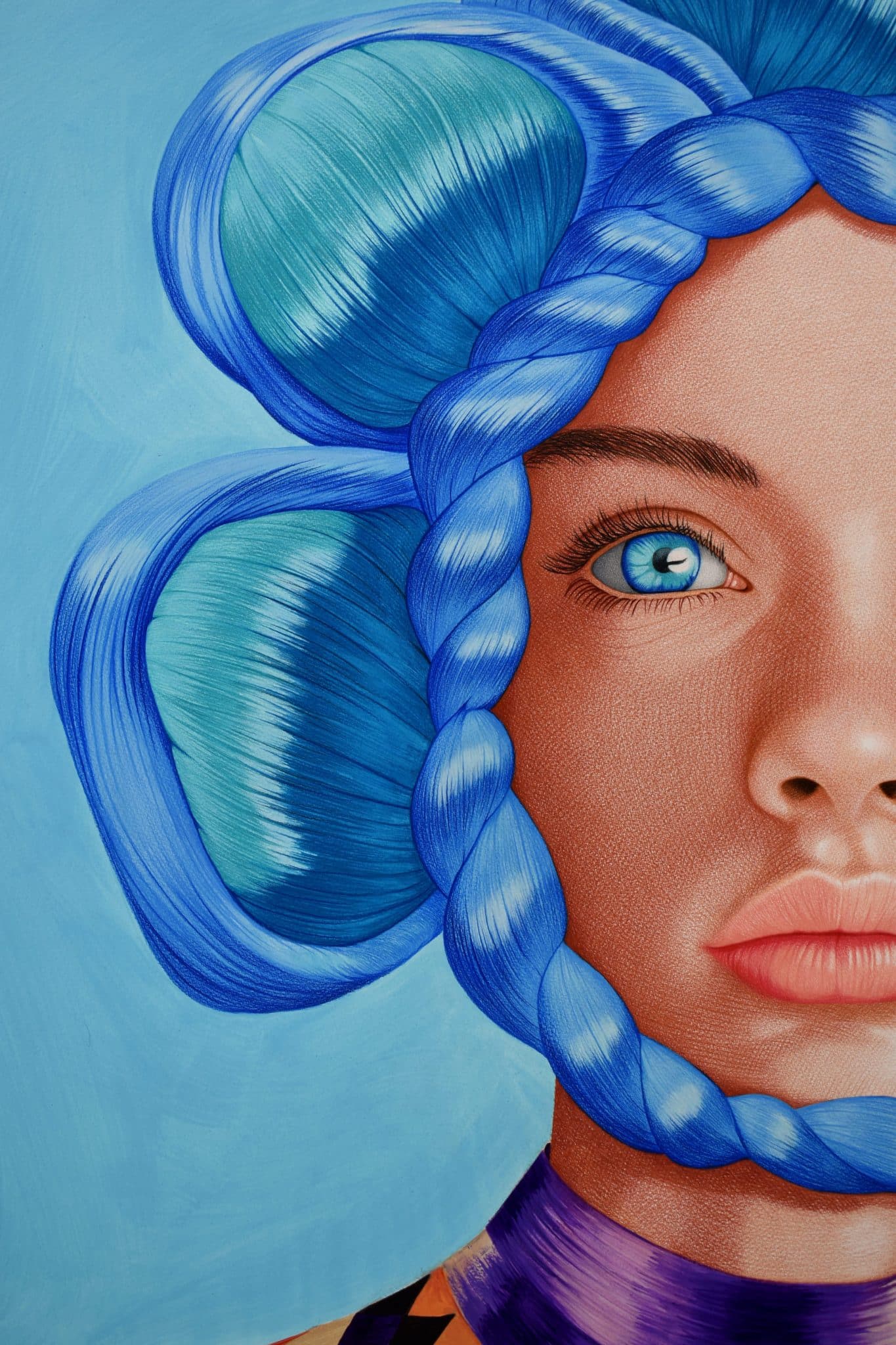Interview with Jin Han Lee
During the group exhibition Young Dreams, Août Gallery had the opportunity to interview Jin Han Lee, one of the exhibiting artists.

Biography
Born in 1982, in Seoul, South Korea, Jin Han Lee graduated from Hongik University with a BFA in painting in 2006 and received her MFA from Goldsmiths, London in 2012.
As a Korean Artist and a researcher based in the UK, Lee developed a heightened understanding of language. In her works, she utilizes this awareness to her advantage, by exploring the permeability of language, in what’s lost in translation, and what’s untranslatable. These depictions of miscommunication are representations of her personal everyday experiences.
In order to communicate what is inexpressible with words, Lee resorts to the oil medium, that she transforms in an unorthodox manner; whether in its texture, movement, color or even scale to create unique fragmented spaces. Her artworks are multi-layered, containing a variety of meanings, stories, and references that will be interpreted by the viewer.
Currently, Lee resides and works in London where she is currently completing her Ph.D. in Fine Art (practice-led) at Slade School of Fine Art, UCL.
Read our interview with the artist below.
Août: Could you tell us a bit more about your background?
Lee: As a Korean artist and researcher based in the UK, I live with a heightened awareness of language. My painting practice builds on an everyday experience of translation between languages and the consequent gaps opened up by what is untranslatable. The question of language permeates my painting and my writing; I do not, however, rebel against it so much as bend it to my purposes, reform its authority.
Août: How would you describe your painting?
Lee: Painting, to me, is a theatrical interface in which I, as a painted protagonist, narrate my experiences of miscommunication and being lost in translation—literally and tragicomically eluding the authority in language.
It’s like performing a monologue under the brightest spotlight possible. When the spotlight turns on, I am blinded. Gazing somewhere in the pitch-black auditorium, I start my performance. This enables me to release my feelings freely. The invisible, or perhaps imagined, audience is chasing my moving body. They follow my gaze and imagine what I am feeling. I am conscious of their watching me. They become conscious that I am conscious of them. Here, my performance is private but shared with the public.
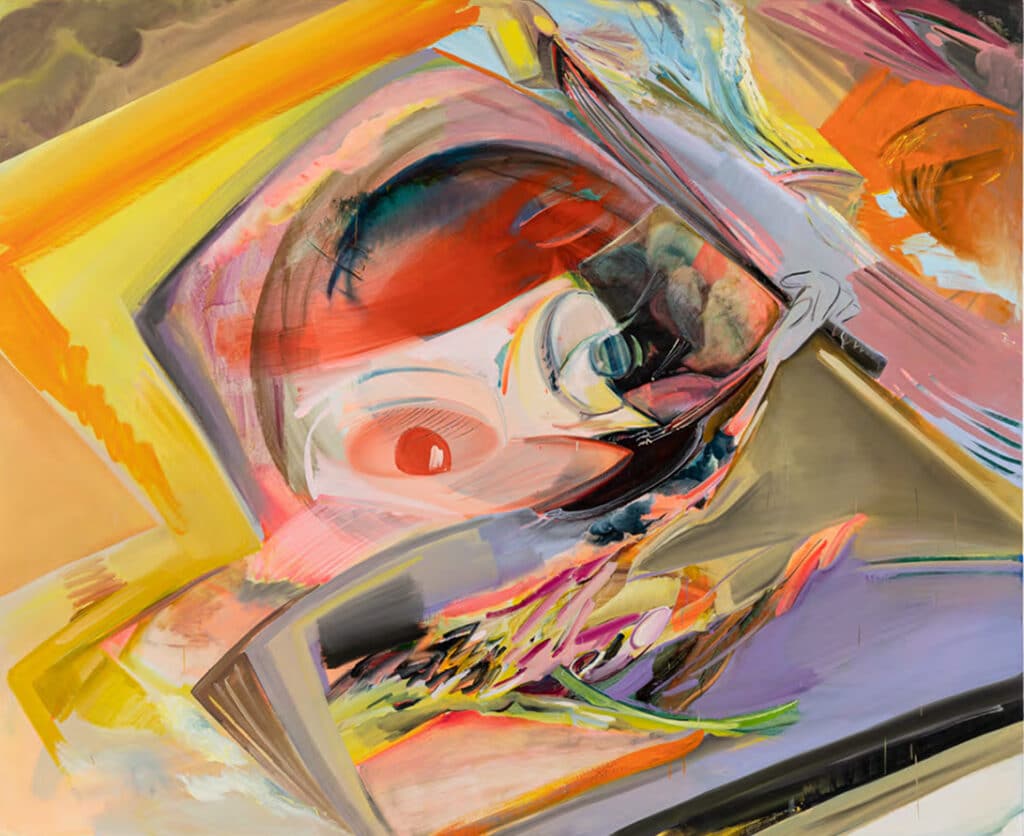
Août: In a previous interview you mentioned that some of your work is inspired by a novel titled “Private Lives of Plants”, written by Korean novelist Seung-u Lee. Could you tell us more about this influence and which specific works are inspired by the novel?
Lee: Between 2014 and 2018, I made a series of paintings inspired by Lee’s novel. It’s a story about a family of four—a mother and father and their two sons—who live together. However, while they share the same house they don’t really speak to or engage with one another. They are all suffering from their own unfulfilled or unrequited love: the parents’ marriage is loveless; their second son, who is the narrator, desires his brother’s lover, who is stolen away from the brothers by her sister’s husband. The family believes that trees and plants are the incarnations of frustrated love.
Through painting tree motifs, I imagined two heartbroken lovers meeting in their dreams. They are far apart, from different continents and times, but they are connected underneath the ocean. Over and over again, I painted two missing trees, leaning towards each other, on two different canvases presented side by side.
Août: Spring is recurrent in some of your works, do you feel a special connection with this season?
Lee: In 2011, I remember, the renowned South Korean singer Sung Si-kyung came out with her song ‘You’re My Spring’. It was an immediate hit, and its title became a common metaphor for love among young people in South Korea. One day when I was sitting in my studio alone and thinking about my own fading love, the lyrics of the song came back to me and I was moved. Then I realised that I am one member of this wider audience: my feelings are shared by many people, giving me a friendship with those who feel the same way. I found I was completing the missing part of the metaphor with my own feelings. We complete metaphors by ourselves.
While I was painting, I was thinking not only about the feeling of togetherness or comfort for one of many broken-hearted lovers, but also about the very moment when the lyrics had suddenly become meaningful for me. I was trying to capture and articulate the moment when my own particular feelings had given the lyric a private meaning. The way in which the figure stands out from the dreamlike pictorial space in my painting You’re My Spring I’m Your Rainbow (2015) corresponds to my own reflection, and the way language can be adopted and reconfigured, allowing me to occupy the painting both as protagonist and subject. My painting brings language into the light to articulate a language and emotion of my own that communicates and functions ‘in my painting’. In the making of this painting, I became my feelings. I had made my first self-portrait.
Août: Your works are always a bit mysterious. Is that intentional? If yes, why?
Lee: A painting is a multi-layered text, full of different stories, motifs and references. There is no one way to access a painting; it does not have a single, objective meaning that should be ‘understood’ by the viewer. Instead it incorporates a multitude of different stories, entry points and references, which can be combined by the viewer in their own subjective way.
Août: Describe your paintings in a few words.
Lee: The paintings I have made since 2012 were all produced following particular encounters or experiences; they all have a story behind them, or, failing that, one which precedes them.
These stories are stories of arrival. They involve experiencing something that I cannot express in language—not in English, and not even in my first language, Korean. Any attempt seems somehow excessive, or ambiguous, and at the limit of what I can say. Its meaning cannot be pinned down and fixed with words. I used such experiences, encounters and difficulties as opportunities to imagine a number of possible meanings. These are what I expressed in the paintings. They were created quite quickly, directly, literally and irreverently.
AUTHOR:
Août Gallery
Date:
July 1, 2021
Category:
PaintingsDate:
June 30, 2021

